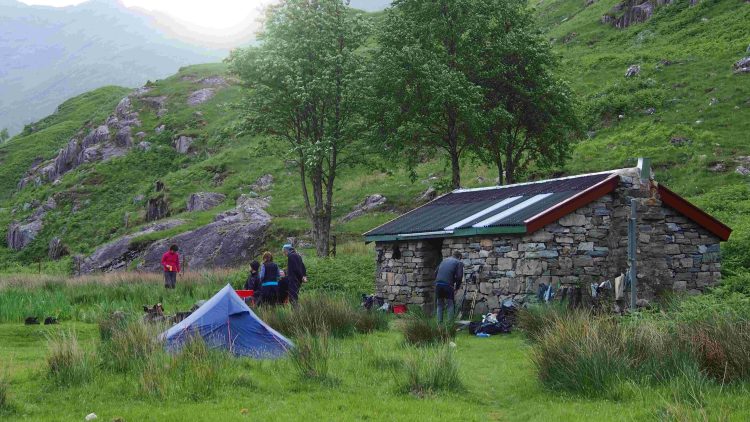Bothies are free, simple shelters in remote mountain or woodland areas that anyone can use. But they can be more than just a place to sleep and shelter from the elements, they can also represent a community of people with similar interests.
What is a hut?
The Mountain Bothies Association (MBA), which runs around 100 huts across the UK (mostly in Scotland, with a few in England and Wales), has a remarkably clear mission statement: “To maintain simple shelters in remote areas for the use and benefit of all those who enjoy wild places.” Not all Bothies are run by the MBA. They are free to use, open to all, and supported by donations from hut members. And unlike today’s identi-hostels, each hut is an individual, with its own history, character, and rugged appeal.
Back to Basics
Bothies offer no luxuries. The volunteers who maintain them take pains to ensure they are sturdy and waterproof, but beyond that, the amenities offered vary. Some offer little more than a roof and a concrete floor, but most have raised sleeping platforms and often a fireplace. One or two even have popular amenities like electricity or toilets. However, as a general rule, you should take everything you need on a Bothies hike to be self-sufficient. Part of the appeal of the Bothies is that you encounter unexpected acts of generosity in the form of candles, coal or even tinned food left by other hikers – but you shouldn’t rely on this alone.

There is no reservation system in the huts, but as a rule, the huts are never “overcrowded” – you can always fit next to other travelers. According to some recollections, there were stories of a dozen people squeezing into a shelter designed for only three or four. If that doesn’t sound like much fun, plan to avoid crowded huts at peak times, and you’ll have a good chance of getting a hut to yourself, or at least a decent space to sleep and relax. To keep numbers under control, groups of six or more are discouraged, and the huts are not intended for use by commercial parties.
And then there’s the issue of sanitation. As the MBA website so delicately puts it: “Few huts have toilets other than a shovel, and the advice is that you should walk at least a couple of hundred meters from the hut and 60 meters from a running water supply before excavation and evacuation begin.”
Goodwill
By now you’ve probably realized that huts aren’t necessarily to everyone’s taste. But they do offer free accommodation, protection from the wind and weather. Huts require that you respect the building and keep it clean and tidy. In return, you get free shelter, the chance to wake up to gorgeous wilderness, and the potential for meaningful encounters with like-minded people. Hut users should respect the building by not leaving trash or perishables behind, and when leaving, make sure the fire is completely out and the door is securely closed. It’s not exactly camping, but if you approach it with respect and openness, the hut experience can be much more memorable than the usual crowded campsites.
Source: alp.org.ua

